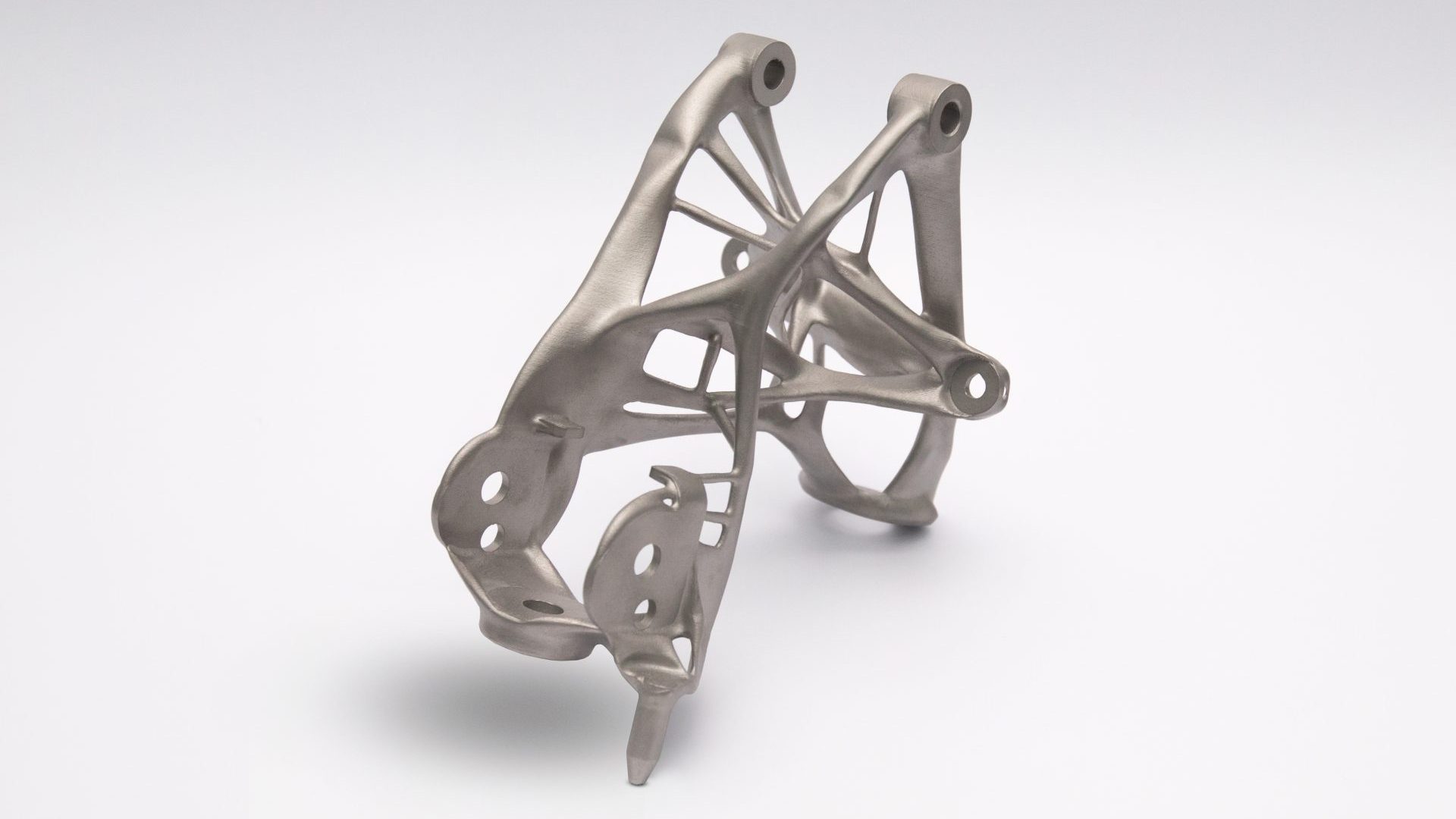

Last week, we took a cursory look at the collaboration between General Motors and Autodesk, resulting in refined part designs made real by 3D printing. The system promises significant benefits to vehicles for every purpose, delivering the win-win of less weight and more strength. To learn more, The Drive talked to GM’s global product development spokesperson, David Darovitz, starting with the seat bracket design exemplified in GM’s press release last Thursday.
“We developed a proof-of-concept seat bracket that transitions eight components into one using new generative design software from Autodesk,” said Darovitz to The Drive. “The concept part is about 40 percent lighter and 20 percent stronger than the bracket we use today.”
Components such as seat brackets are not the sole application for this technology. Darovitz states that the first recipients of parts designed this way will be low in production volume, though he keeps whether they will be used in technological showcase vehicles like the Corvette hush-hush.
“We are actively working on several other part design projects using this technology that we expect to go into production on low-volume vehicle applications soon. […] Once these are finalized, we can release the information,” he said.

But why restrict silver bullet solutions such as this to low-volume cars? Couldn’t GM differentiate itself from its Detroit competition by implementing these parts in its mass-market vehicles?
“Let’s take the seat bracket I mentioned above as an example,” said Darovitz. “You must look at the cost from a total enterprise cost perspective—material, tooling, logistics, production, and other associated costs to develop and manufacture one common-use seat bracket made from multiple parts.”
He continued, “With this seat bracket design, you eliminate the logistic costs of shipping multiple parts between suppliers, you eliminate the capital cost of building stamping dies for each of the stamped parts, and welding costs are eliminated to join the parts together. 3D printing costs are still relatively high in comparison to traditional manufacturing methods, which does offset the savings outlined above.”
While small-run production techniques such as 3D printing don’t necessarily scale up well with mass production, there is still a case to be made for these production methods, though the fights 3D printing will win against traditional manufacturing are today few in number.
“No part is the same, so this business case analysis must be completed for every application investigated to determine whether or not the costs are less than traditional methods,” Darovitz said. “We may choose to invest more to 3D print a part if the added value in terms of performance merits the additional cost. If a traditional manufacturing process is less expensive than 3D printing and there is not substantial performance benefit, then traditional manufacturing processes will be used.”
While the technology develops, its limitations prevent it from seeing use any place other than where it is strictly needed for any and all benefit, no matter how marginal.
“We see use today on low production applications like motorsports, niche vehicles, specific vehicle variants, or optional content,” he said.
Nevertheless, 3D printed parts may one day be found in mass-market vehicles from GM. For the moment, production vehicles using smart parts such as these remain a pipe dream. On the way, but no ETA.
“As the capabilities of 3D printing advances to print larger parts faster, the technology will be able to support higher-volume end-use production applications,” Darovitz added. “This will enable us to broaden our use of generative design for additive manufacturing across the GM portfolio to further lighten our vehicles.”
“No current GM vehicles have end-use production parts on vehicles that utilized generative design. [We are] working on part designs now for future application, but not ready to share specifics at this time,” he said.
Composite materials may get the limelight for lightweighting, but novel uses of well-understood materials are equally as valuable, if not more so. Does it matter how the excess weight is shed, as long as the scale moves counterclockwise? Maybe not.